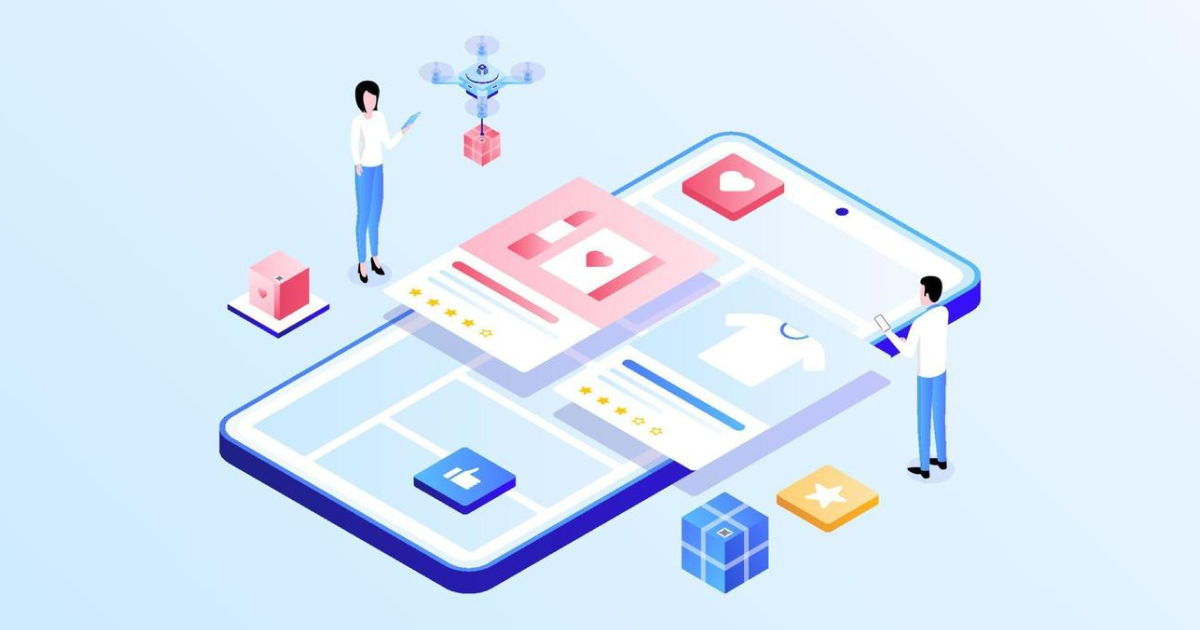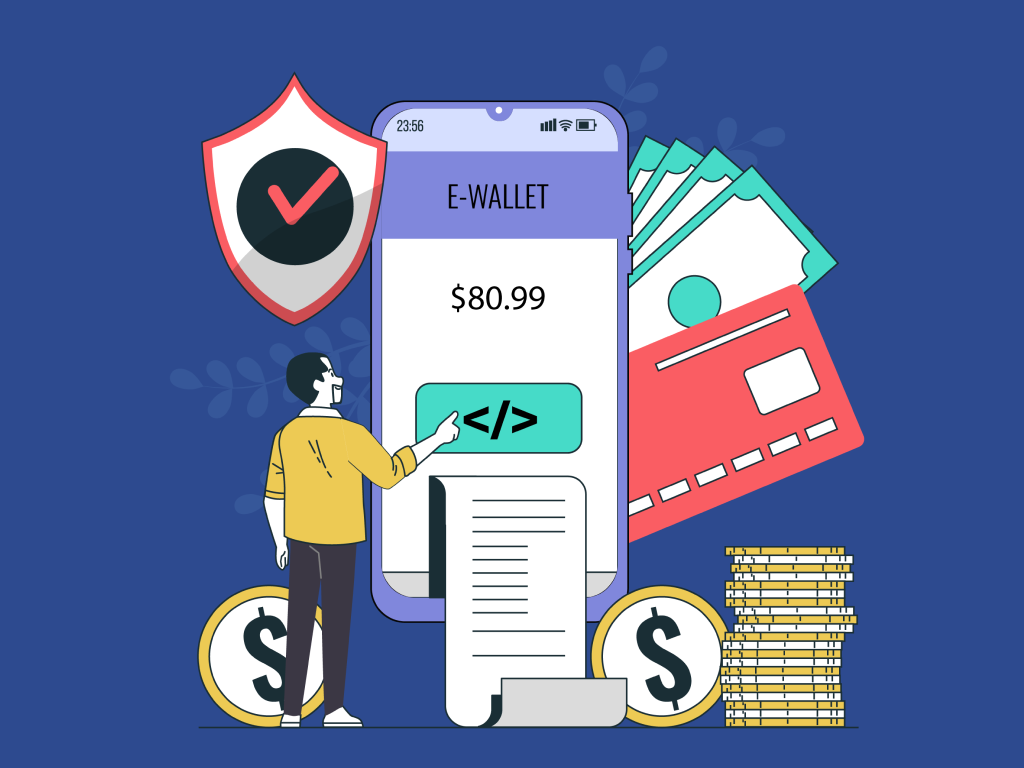 Conversion-Focused Landing Pages – More Leads, Less Bounce!
Conversion-Focused Landing Pages – More Leads, Less Bounce!
A Complete Guide to P2P Payment App Development
Written by Techanic Infotech » Updated on: June 23rd, 2025

Did you ever split a dinner bill with friends or send money to a friend for concert tickets?
You probably used a P2P payment app for the transaction.
P2P payment apps have made money transfer a speedy and easy process that only requires a few taps to accomplish.
Peer-to-peer platforms have become a necessity for personal as well as business transactions in everyday life.
Businessmen and entrepreneurs who get access to this growing industry position themselves at an advantage.
P2P payment app development offers a lot of exciting opportunities for both fintech startups and organizations that want to develop their payment solutions.
This guide will take you through the fundamentals of P2P apps, such as their significance and development method, to design easy-to-use apps.
Let's get started.
What is a P2P Payment App?
Users can make payments directly from mobile phone to mobile phone with P2P (peer-to-peer) payment apps without needing cash, cards, or traditional banking services in certain circumstances.
Money transfer apps allow users to link their bank accounts or digital wallets so that they can perform quick and secure payments anywhere, at any time.
Remember Venmo, PayPal, or Cash App.
P2P apps provide seamless transaction experiences when splitting the rent or paying back friends for coffee.
Their defining characteristic is the great degree of user-friendliness that comprises low input levels and immediate confirmation, along with consistent transaction records.
Their convenience has rendered these apps critical elements of contemporary digital financial frameworks.
P2P payment app development enables your ambition of establishing intuitive platforms that touch and serve a vast digitally-engaged populace when you enter this market space.
Let us consider the growing significance of investing in this type of application today.
Why It’s Best to Invest in P2P Payment App Development?
P2P payment app development represents the best investment opportunity for modern businesses.
The rise of P2P apps goes beyond passing trends to become a fundamental expectation among modern users.
You need to think about joining the P2P payment app development movement now.
1. Huge Market Demand
The demand for quick and protected mobile payment solutions is expanding at a rapid pace.
To develop a payment app means joining a market with millions of users searching for better solutions.
2. Seamless Monetization Opportunities
P2P applications provide user convenience while also serving as a revenue-generating tool.
If you develop a P2P payment app, it provides opportunities for revenue generation through service fees, advertising, subscription models, and business partnerships.
3. Competitive Differentiation
The development of your app provides your business with a competitive market advantage.
Developing a payment application specifically designed for your brand and audience enables you to differentiate yourself within the crowded digital marketplace.
4. Future-Ready Fintech Integration
Peer-to-peer applications integrate effectively with blockchain networks alongside cryptocurrency and artificial intelligence finance solutions.
To develop a payment app today creates opportunities for advanced fintech integration in the future.
e wallet app development guide
Steps to Build a P2P Payment App
You're eager to enter the P2P domain, which is great!
But how do you start?
To build a P2P payment app that people love involves adhering to a proper development process.
Building a P2P payment app is more than coding because you need to put emphasis on providing a user experience, putting security measures in place, and keeping it simple.
We’ll explore essential steps to develop a peer-to-peer payment app that provides both functionality and future readiness.
1. Define Your App’s Purpose and Audience
What unique functionalities will define your application?
Does the app enable informal financial exchanges among friends? Or small businesses? Your app might serve freelancers and support international transactions.
The most important step to create a peer-to-peer payment app that truly addresses issues is getting to know your niche market.
Design user-first from the start.
2. Design the Feature Set
Your app's strength is in its features.
Your payment app must provide instant money transfer support, along with connecting bank accounts and saving transaction history, in addition to reading QR codes and implementing biometric login for security. Yes, thank you.
Push notifications and in-app support go a long way in making users happy.
Keeping a tab on digital wallet trends allows you to design unique features that your users will love.
3. Select an Appropriate Tech Stack
Now we get to the technical aspects.
To support banking and payment gateways, your app needs secure backend infrastructure and trustworthy APIs with a clean user interface.
If you wish to have real-time updates and chat support functionality, then you should choose a tech stack that is scalable and has high performance.
Choose a scalable and high-performance app tech stack .
Choosing the right development tools while designing a P2P payment app ensures that you've crossed halfway to becoming successful.
4. Design for Simplicity and Trust
Users will steer clear of an app that isn't working as it should and has dubious features.
Our goal is to design easily understandable layouts and facilitate smooth navigation. Think Venmo-easy.
Your security badges, alongside your UX flow and branding, must inform users that they are in a secure environment.
Building a digital wallet app means developers must build user trust alongside building the app.
5. Prioritize Security from Day One
End-to-end encryption is combined with multi-factor authentication and fraud detection features in our security measures .
Security needs to be the building block since money transactions need to be secured.
If you consider to build a peer-to-peer payment app, it puts you in a position of seeing the potential threats at the very beginning so that you can guard against hacker attacks before they even occur.
6. Test, Iterate, Repeat
Begin with a beta release and keep improving based on feedback.
Test your app under real-world conditions such as weak internet connectivity, older hardware, and users who find it difficult to use the interface (since usability is important as well).
Once you have perfected all that you can, you can then start your app launch.
Your peer-to-peer payment app will be a hit if you continue to collect and act on user feedback.
7. Launch and Market the App
It's showtime!
Get your app featured in appropriate app stores while creating buzz on social media websites using launch offers and first-user incentives, and partner with finance industry influencers.
Your marketing plan has to be just as precise as your work in programming.
Keep tabs on digital wallet trends so that you can spot opportunities for your app to ride the next waves.
With this out of the way, let’s find out about the features that you should know.
Features to Have in a Peer-to-peer Payment App
Essential components must be included in a peer-to-peer payment application to ensure users have a positive experience.
The features of your payment app determine the overall user experience.
Users demand money transfer solutions that deliver speed, simplicity, and security, while your app must exceed these expectations by adding unique features.
We’ll explore essential features to build a peer-to-peer payment app that users will find irresistible.
1. Instant Money Transfers
People demand real-time money transfers that avoid any delays or pending status that causes frustration.
The ability to make immediate transfers results in a seamless experience suitable for both small payments between friends and larger bills like rent.
It’s all about speed and convenience.
2. Bank & Card Linking
Ensure users can connect their selected bank accounts and cards, along with additional wallets.
Providing multiple options helps users find reasons to remain within your app.
Convenience equals higher retention and repeat use.
3. Transaction History
Users need to access information about their transactions along with their corresponding dates.
Users find it easy to track their activity when their transaction history includes dates, times, and recipient information.
Users will appreciate it if your app provides filtering options and downloadable reports for budgeting and record management.
4. QR Code Payments
QR codes provide a quick, secure method for money transfers during face-to-face transactions.
Users can make payments without entering contact details because scanning the QR code is enough.
This payment solution works well for small business transactions as well as group payments and peer-to-peer money transfers during travel.
5. Push Notifications
Notifications ensure users remain informed because each transfer, receipt, or alert reduces potential confusion.
They create trust between your users and your app by demonstrating its security and responsiveness.
Using smart reminders enhances user interaction as well as repeat app usage.
6. Biometric Authentication
Security doesn't have to be a hassle.
Face ID, together with fingerprint scans and retina recognition, enables users to secure their accounts with ease.
The application functions quickly and with ease to demonstrate its commitment to user security and privacy.
7. Split Bills Feature
Users mustn't face complicated calculations or disagreements when splitting bills.
The payment splitting feature lets users divide payments and complete transactions immediately, which works great for group dining, shared travel expenses, or collective subscriptions.
Peer-to-peer apps often feature this as their most popular function.
8. In-App Chat Support
Users frequently need to ask questions or find solutions to problems that require immediate clarity.
Your application delivers real-time customer support through its built-in chat feature, which enhances user experience through responsiveness and dependability.
The feature allows users to send friendly reminders such as “Hey, you forgot to pay Sam!”
Challenges You May Face While Creating a Payment App
Are you looking to create a peer-to-peer payment app such as Venmo or Cash App?
The market for peer-to-peer payment apps is growing fast, where application security and user convenience reign supreme.
Understanding the challenges you will face before you release your app on the App Store or Play Store is critical.
We will go through the major challenges you will face while developing a peer-to-peer payment app and demonstrate how to overcome them before they become issues.
Security & Fraud Prevention
In creating a peer-to-peer payment app, security is the underlying aspect, not one of its components.
Your application users will have to provide sensitive information when linking their bank accounts and making real money transactions.
Your application needs robust encryption methods coupled with biometric authentication processes, two-factor login procedures, and real-time fraud detection features.
A small security vulnerability can shatter users' trust and hurt your business's reputation.
Regulatory Compliance (Yes, It's a Lot)
Creating a peer-to-peer payment application involves in-depth knowledge of financial regulations.
Your peer-to-peer payment application demands rigorous adherence to PCI DSS compliance guidelines, along with KYC and AML guidelines, which vary from country to country.
If your application does not meet a single regulatory obligation, it can receive penalties or even be suspended.
The most intelligent approach? Start your development journey with compliance integration as your top priority.
Real-Time Transactions (A Technical Tightrope)
Instant payments are a favorite of everyone.
Building a peer-to-peer payment app for real-time money transfer requires the development of a backend system that runs with both superb speed and perfect reliability.
Your backend functions should include banking API integration, management of transaction queues, and ensuring seamless transaction completion at all times.
A single lag or failure of a transaction will lead to user frustration and bad reviews.
A Trustworthy, User-Friendly Interface
User experience is important — very important.
Your peer-to-peer payment app must look simple and yet be trustworthy.
Every button and icon should serve as a clear guide for users, while every message must be transparent to the user. Payment failures and user drop-offs mostly happen because of intricate layouts and bad design decisions.
Good UX/UI = users are confident = increased transactions.
Handling Multiple Integrations
Developing a peer-to-peer payments app that works seamlessly involves several third-party integrations like bank APIs and payment gateways, as well as identity verification services and real-time notifications.
However, each integration complicates matters.
To keep things in sync between the services demands a solid architecture and continuous testing are required because APIs can fail and services change.
Juggling requires perfect coordination because dropping a single ball results in a complete loss of control.
Scalability and Performance
Your application needs to be robust to fully benefit from success.
To reach your goal of having a peer-to-peer payment application growing from hundreds to millions of users, you need to build a backend infrastructure in particularly tailored for high performance.
Your system is under pressure from expanding traffic, growing data requirements, and new features.
Long-term success relies on elastic cloud solutions combined with load balancing and performance monitoring.
Future Trends in Developing a P2P Payment App
The fintech industry evolves quickly, which necessitates peer-to-peer payment app developers to keep looking at upcoming trends to keep their app relevant.
Customers want more from their applications as technology continues to advance and other players scramble to remain ahead.
To create a peer-to-peer payment app today necessitates you strategizing for its continued relevance in the years to come.
We need to delve into the trends that will shape the way peer-to-peer payment apps will be created in the future.
Cross-Border Transactions & Multi-Currency Support
Since digital commerce is growing globally, users anticipate that their applications will do the same.
Creating a multi-currency peer-to-peer payment app with cheap cross-border payments provides important competitive benefits.
Your platform covers more users yet remains competitive in global markets.
Fraud Detection powered by AI
Intelligent fraudsters require intelligent tools.
If you are looking to develop a peer-to-peer payment app today, it involves AI integration for efficient fraud detection.
Real-time behavioral pattern analysis using machine learning models facilitates early suspicious transaction detection to avoid harm.
It's security, but more discerning and quicker.
Voice & Chat-Based Payments
"Hey Siri, send $20 to John."
Voice payments are no longer fiction.
Peer-to-peer payment app developers should consider opportunities to integrate voice assistants and in-app chat payment capabilities.
There is a purpose to make it easier for users and lighten their load.
Blockchain & Crypto Integration
Startups often choose blockchain technology as the base when building peer-to-peer payment apps. Why? Transparency, speed, and minimal fees.
Tech-savvy and worldwide users benefit from blockchain while using stablecoins or crypto wallets.
Hyper-Personalization & Smart Insights
Users don't merely wish to send money. They desire insights.
Analytics and AI facilitate creating a peer-to-peer payment app that provides spending reports and savings tips alongside smart alerts.
This functionality turns your application into a specialized personal finance butler.
How Can Techanic Infotech Help in Developing a Peer-to-Peer Payment App?
Want to turn your big fintech concept into reality? Picture rolling out a sleek, secure, and lightning-fast P2P app that users can't quit raving about.
That's where Techanic Infotech enters the picture, your behind-the-scenes tech dream team!
As a reliable eWallet app development company , we excel at creating peer-to-peer payment apps that don't just function; they amaze.
From intuitive UI designs that users can't resist tapping to bulletproof backend systems designed for real-time transactions, we do it all.
Need to add AI, blockchain, or voice payments? We've got you covered. Let's create something future-ready, together.
e wallet app development guide
Conclusion
If you develop a P2P payment app, it represents the next step in digital finance evolution beyond basic money transfer functionalities.
Fintech startups and enterprises with innovative concepts should seize this moment to take action.
By choosing appropriate technology and features along with a strategic partner, your application will transform money management and transactions.
Techanic Infotech offers guidance to develop a peer-to-peer payment app that delivers speed and security alongside future-readiness.
Our partnership will bring your vision for a peer-to-peer payment app to life through each smart tap.
Note: IndiBlogHub features both user-submitted and editorial content. We do not verify third-party contributions. Read our Disclaimer and Privacy Policyfor details.
Copyright © 2019-2025 IndiBlogHub.com. All rights reserved. Hosted on DigitalOcean for fast, reliable performance.













